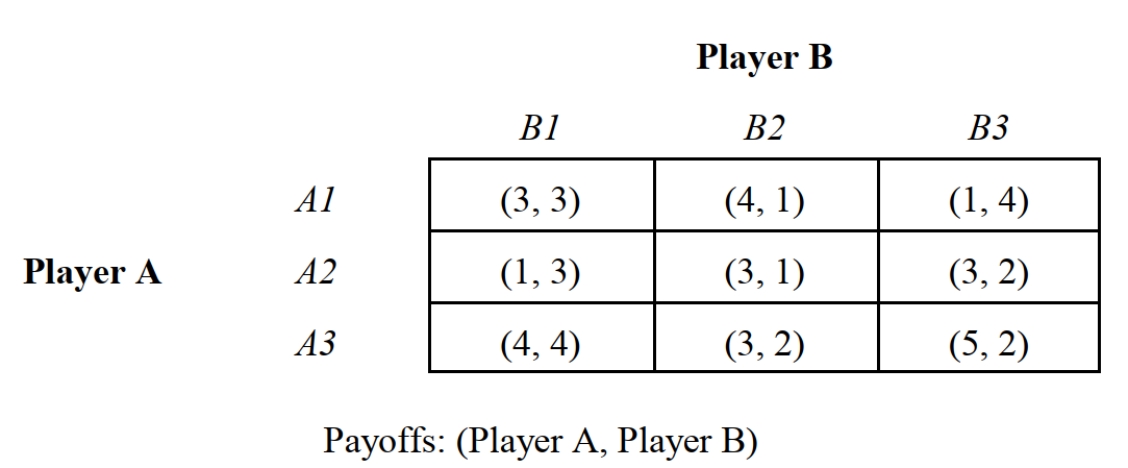Multiple Choice

-Suppose that the game depicted in Figure 11.7 is modeled as a sequential move game with Player B moving first and the payoffs are (Player A, Player B) . The subgame perfect equilibrium for this game is:
A) {B3 6 A3}
B) {B2 6 A1}
C) {B1 6 A3}
D) {B3 6 A2}
E) None of the above.
Correct Answer:

Verified
Correct Answer:
Verified
Q34: <img src="https://d2lvgg3v3hfg70.cloudfront.net/TBR1330/.jpg" alt=" -In the game
Q35: A subgame-perfect equilibrium is:<br>A) An equilibrium to
Q36: <img src="https://d2lvgg3v3hfg70.cloudfront.net/TBR1330/.jpg" alt=" -Consider the game
Q37: A subgame equilibrium:<br>A) Is the solution to
Q38: Terminal nodes:<br>A) Designate the end of a
Q40: <img src="https://d2lvgg3v3hfg70.cloudfront.net/TBR1330/.jpg" alt=" -In the game
Q41: <img src="https://d2lvgg3v3hfg70.cloudfront.net/TBR1330/.jpg" alt=" -Consider the game
Q42: <img src="https://d2lvgg3v3hfg70.cloudfront.net/TBR1330/.jpg" alt=" -Suppose that an
Q43: An extensive-form game summarizes:<br>A) Players, strategies, discount
Q44: <img src="https://d2lvgg3v3hfg70.cloudfront.net/TBR1330/.jpg" alt=" -Suppose that an